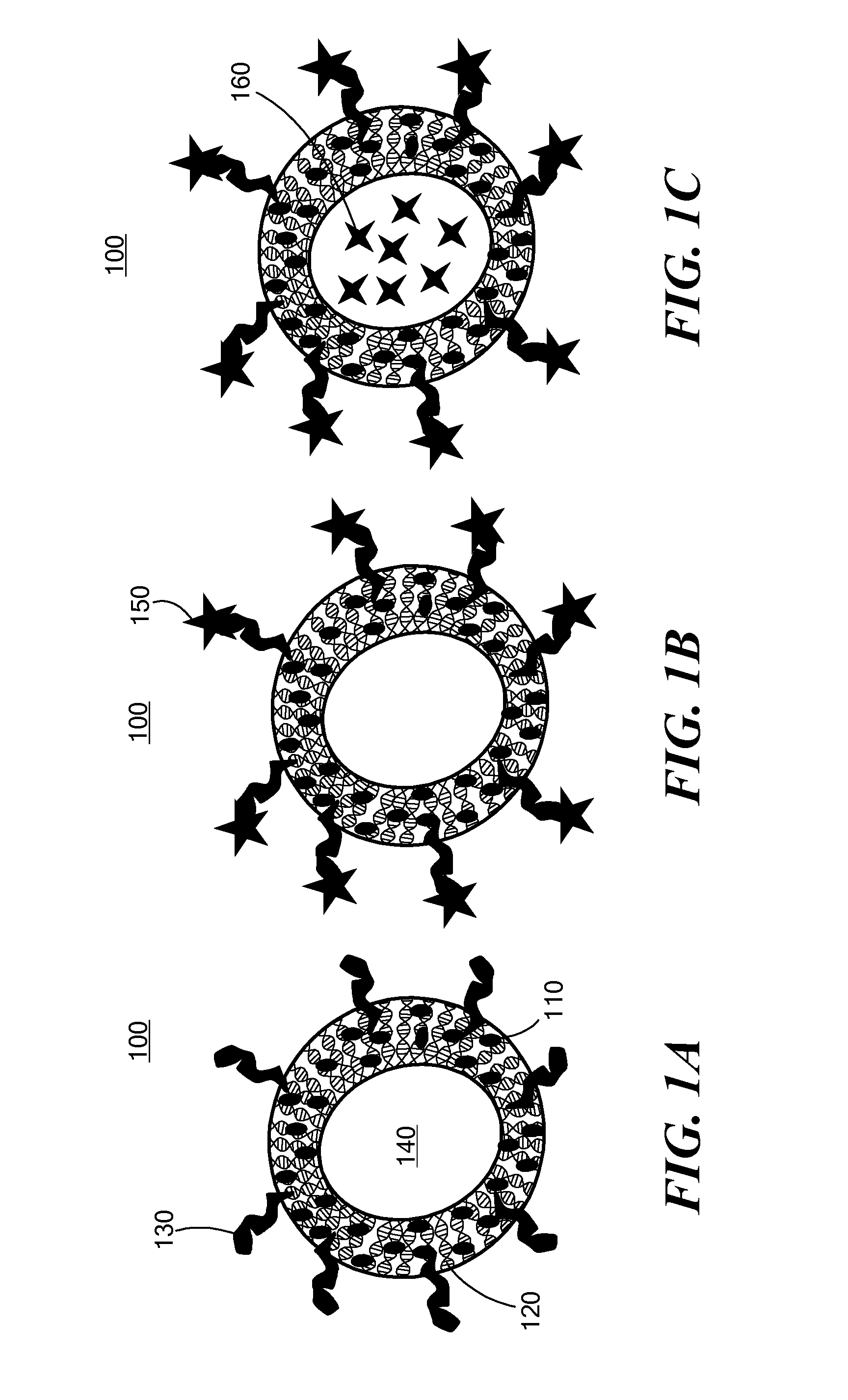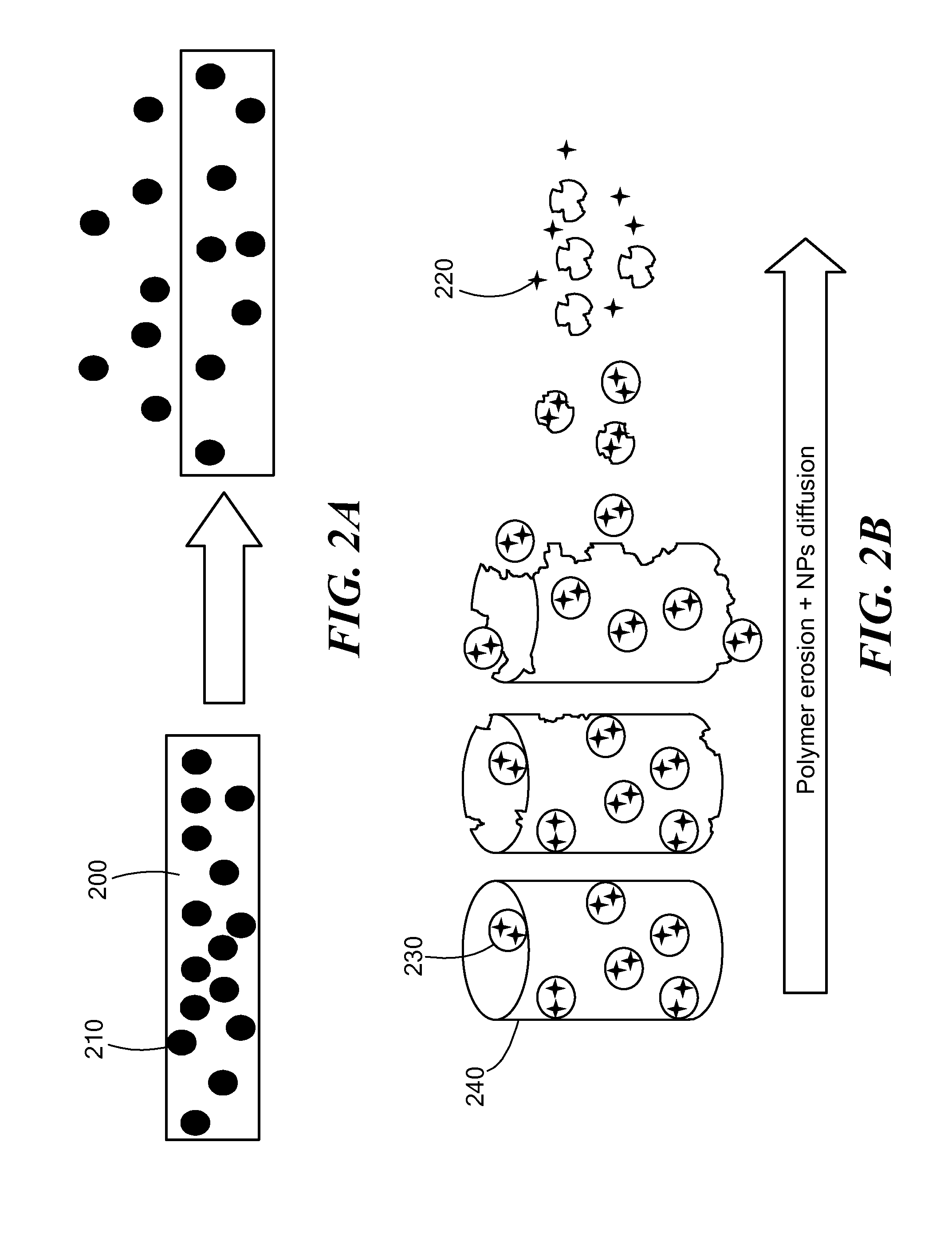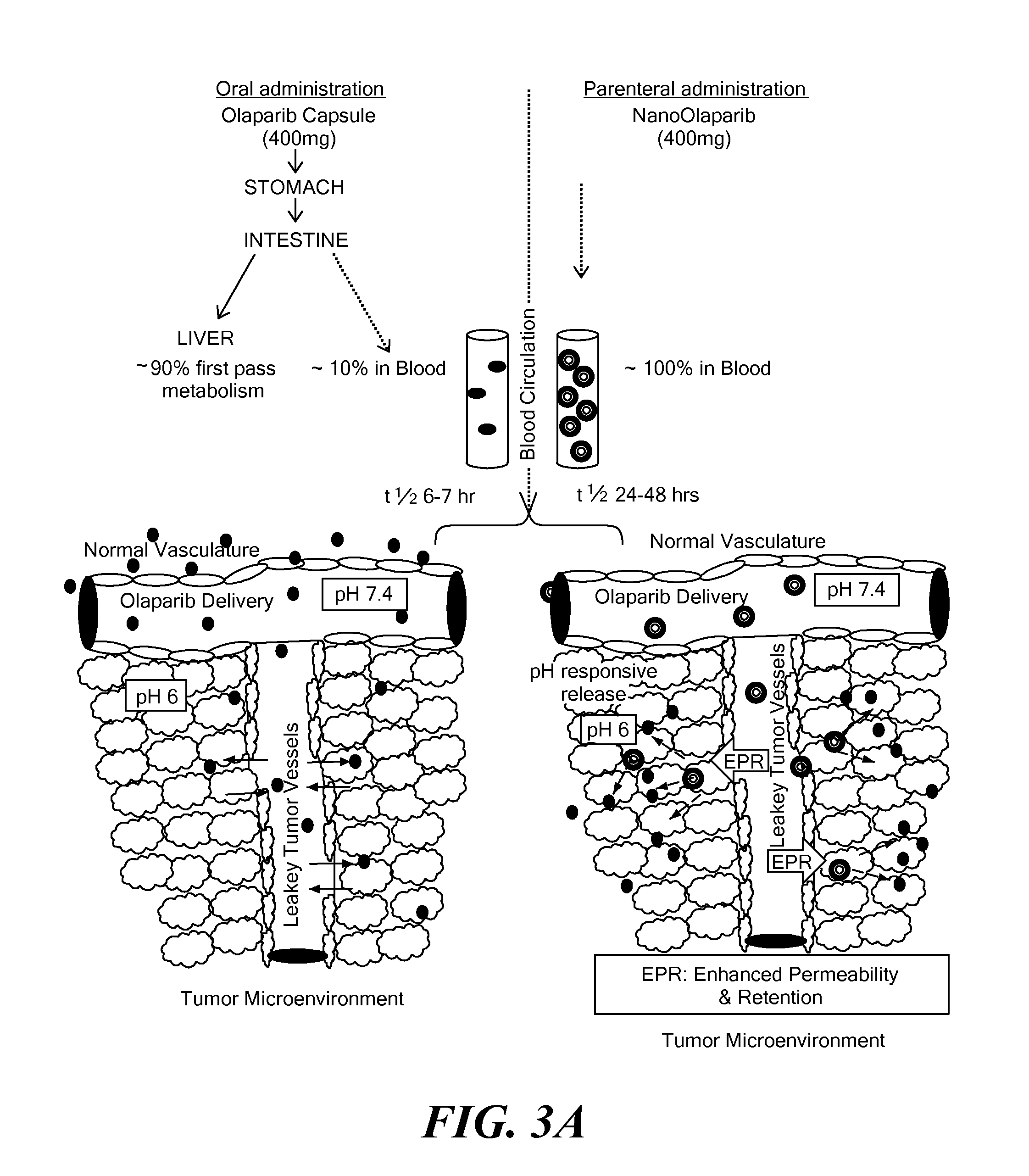Nanoparticle drug delivery system and method of treating cancer and neurotrauma
a delivery system and nanoparticle technology, applied in the direction of muscular disorder, cardiovascular disorder, drug composition, etc., can solve the problems of poor bioavailability and follow a cumbersome routine, and achieve the effect of effectively killing tumor cells, shrinking tumors, and efficient delivery of inhibitors
- Summary
- Abstract
- Description
- Claims
- Application Information
AI Technical Summary
Benefits of technology
Problems solved by technology
Method used
Image
Examples
example 1
Materials and Methods
[0044]Synthesis of NanoOlaparib: 1,2-dipalmitoyl-sn-glycero-3-phosphocholine (DPPC), Cholesterol, 1,2-distearoyl-sn-glycero-3 phosphoethanolamine-N-[methoxy(polyethyleneglycol)-2000(DSPE-mPEG-2000), 1,2-dioleoyl-3-trimethylammonium-propane (chloride salt) (DOTAP) were purchased from Avanti Polar Lipids (Alabaster, Ala.). Briefly, all the lipids and polymers (Avanti polar Lipids) with Olaparib, were dissolved in chloroform and the solvent was evaporated to form the lipid-polymer-Olaparib melt. The film was dried overnight under vaccum, hydrated with aqueous solvent at 50° C. to for a pre-w / o emulsion. The pre-emulsion was sonicated at room temperature for 10 min, yielding highly condensed lipid nanoparticles of Olaparib.
[0045]HPLC analysis: The concentration of Olaparib encapsulated was determined using HPLC. The mobile phase was optimized to be methanol: water (64:36) run on a reverse phase C18 column (SUPELCO™), and the Olaparib was detected at 207 nm. All the ...
example 2
Formulation of Highly Condensed, Tumor pH Responsive NanoOlaparib
[0060]All the optimization steps were targeted towards formulating highly condensed pH responsive nanoformulation for Olaparib delivery, in order to obtain a ready-to-use injectable formulation, tailored for in vivo or in vitro studies at clinically relevant concentrations.
[0061]The nanoparticle size distribution was analyzed with Transmission Electron Microscopy (TEM) (FIG. 4B) as seen across several batches was 100-120 nm and are in concert with the Dynamic Light Scattering (DLS) measurements (FIG. 4A). It is well known that the nanoparticles around this size range are most suitable for passive uptake of NanoOlaparib, specifically by leaky tumor vasculature (31, 32). The nanoparticle formulations are stable for at least 5 months, as confirmed by DLS measurement, but there was a significant increase in particle size after 7 months of storage at 4° C. (FIG. 4A).
example 3
NanoOlaparib Shows Greater Drug Release at Tumor pH Compared to pH 7.4
[0062]The components of the nanoparticles were optimized such that the NanoOlaparib, in the presence of high serum media (simulating the blood concentration), would remain intact at pH 7.4 (blood), but show a burst release in response to acidic pH 6, which is prevalent in tumor microenvironment and endosomal organelles. Indeed NanoOlaparib demonstrated pH triggered release kinetics as seen in in vitro release studies of Olaparib and NanoOlaparib in serum at pH 7.4 and pH 6 (FIG. 4E). The release of Olaparib from the nanoparticle is 7.5 fold higher in tumor pH compared to the release of Olaparib at blood pH, in the presence of serum. The release profile of NanoOlaparib compared to the free Olaparib also implies a longer residence time in the blood for NanoOlaparib (FIG. 4D). The dynamics of elimination rate are not accounted for in these in vitro studies. It is believed that the abrupt increase in the size of NanoO...
PUM
| Property | Measurement | Unit |
|---|---|---|
| Diameter | aaaaa | aaaaa |
| Diameter | aaaaa | aaaaa |
| Molar density | aaaaa | aaaaa |
Abstract
Description
Claims
Application Information
 Login to View More
Login to View More - Generate Ideas
- Intellectual Property
- Life Sciences
- Materials
- Tech Scout
- Unparalleled Data Quality
- Higher Quality Content
- 60% Fewer Hallucinations
Browse by: Latest US Patents, China's latest patents, Technical Efficacy Thesaurus, Application Domain, Technology Topic, Popular Technical Reports.
© 2025 PatSnap. All rights reserved.Legal|Privacy policy|Modern Slavery Act Transparency Statement|Sitemap|About US| Contact US: help@patsnap.com



